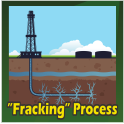Flooding in NY and PA Raising New Fracking Concerns
On Monday, September 12, 2011
0
comments
The floods in upstate New York are raising new concern about plans for natural gas drilling in New York.
The areas most affected by the disaster happen to sit on the Marcellus Shale, the rich natural gas field that the natural gas industry hopes to open for future drilling using horizontal hydraulic fracturing, the controversial extraction method that is currently under public review in New York.
The New York State Department of Environmental Conservation has set a timeline that calls for a public comment period on its environmental impact document and proposed regulations by Dec. 12, with final regulations and new drilling permits envisioned for some time next year.
But environmental groups and some elected officials are now calling for more time, saying floodplains maps should first be updated to take into account the recent extreme weather events and point out that such flooding makes hydrofracking an even bigger environmental risk.
“The floodplain is a different place than it was,” said New York State Assemblyman Kevin A. Cahill, a Democrat, who chairs the energy committee.
He said places that used to flood sporadically or not at all now experience three or four floods a year. “We need to remap,” he said.
In Pennsylvania, where drilling in the Marcellus is already taking place, environmental groups are asking that state’s environmental officials to disclose whether drilling pits have overflowed and spilled their toxic contents into flooded creeks, streams and rivers.
In New York, state environmental officials say that their draft requirements for hydrofracking already ban the placement of well pads and storage for drilling chemicals and waste water in flood plains.
But their own environmental impact document acknowledges that mapping of some of the areas affected by recent flooding won’t be ready until 2012.
“Broome County is one of the hotspots that gas companies are trying to target for drilling and much of the county is now underwater,” said Katherine Nadeau, of Environmental Advocates of New York. “That’s scary to think about.”
Mr. Cahill said he was also asking the environmental conservation department for an extension of the public comment period by an additional three months. He said communities affected by the floods need to recover to be able to participate in the public review of the proposed hydrofracking rules.
Read original article here.
The areas most affected by the disaster happen to sit on the Marcellus Shale, the rich natural gas field that the natural gas industry hopes to open for future drilling using horizontal hydraulic fracturing, the controversial extraction method that is currently under public review in New York.
The New York State Department of Environmental Conservation has set a timeline that calls for a public comment period on its environmental impact document and proposed regulations by Dec. 12, with final regulations and new drilling permits envisioned for some time next year.
But environmental groups and some elected officials are now calling for more time, saying floodplains maps should first be updated to take into account the recent extreme weather events and point out that such flooding makes hydrofracking an even bigger environmental risk.
“The floodplain is a different place than it was,” said New York State Assemblyman Kevin A. Cahill, a Democrat, who chairs the energy committee.
He said places that used to flood sporadically or not at all now experience three or four floods a year. “We need to remap,” he said.
In Pennsylvania, where drilling in the Marcellus is already taking place, environmental groups are asking that state’s environmental officials to disclose whether drilling pits have overflowed and spilled their toxic contents into flooded creeks, streams and rivers.
In New York, state environmental officials say that their draft requirements for hydrofracking already ban the placement of well pads and storage for drilling chemicals and waste water in flood plains.
But their own environmental impact document acknowledges that mapping of some of the areas affected by recent flooding won’t be ready until 2012.
“Broome County is one of the hotspots that gas companies are trying to target for drilling and much of the county is now underwater,” said Katherine Nadeau, of Environmental Advocates of New York. “That’s scary to think about.”
Mr. Cahill said he was also asking the environmental conservation department for an extension of the public comment period by an additional three months. He said communities affected by the floods need to recover to be able to participate in the public review of the proposed hydrofracking rules.
Read original article here.







